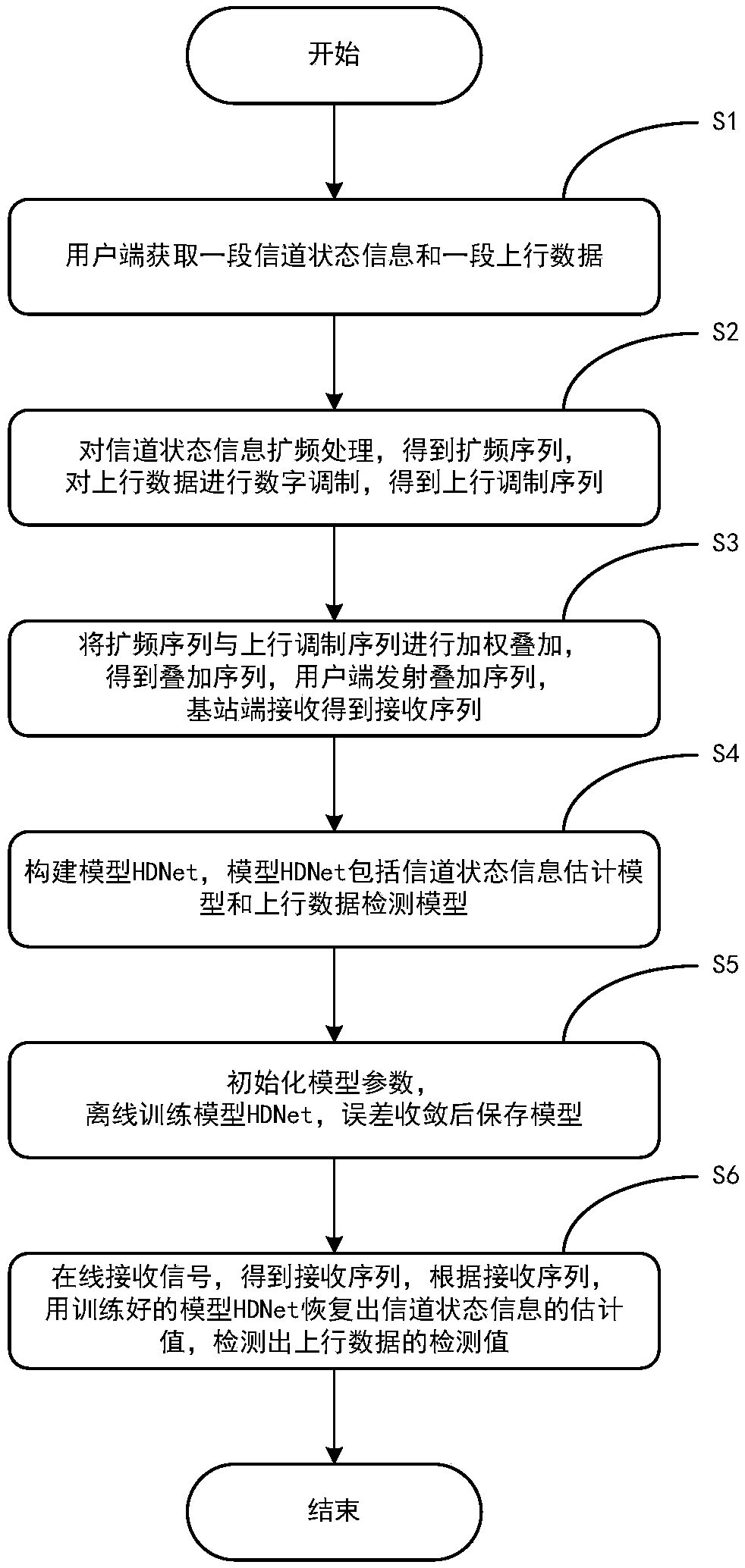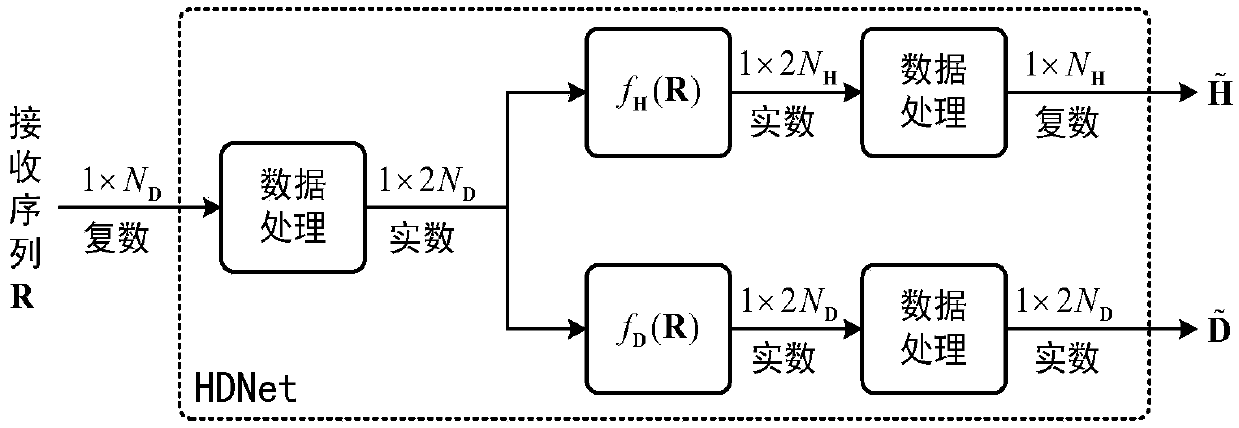Superimposed CSI (Channel State Information) feedback method based on deep learning large-scale MIMO (Multiple Input Multiple Output) system
A deep learning and large-scale technology, applied in baseband systems, baseband system components, transmission systems, etc., can solve problems such as large codebook dimensions, difficulty in application, and occupied spectrum resources, so as to improve recovery accuracy and reduce processing complexity degree of effect
- Summary
- Abstract
- Description
- Claims
- Application Information
AI Technical Summary
Problems solved by technology
Method used
Image
Examples
example 1
[0039] Example 1: The step 1) example is as follows:
[0040] Hypothesis: N H = 4, N D =12, K=3, Q=(1+1j, 2+2j, 3+3j),
[0041] Channel state information: H=(0.2+0.3j,0.4+0.5j,0.6+0.7j,0.8+0.9j),
[0042] Uplink data: D=(0,1,1,0,1,1,0,0,1,0,0,1,1,0,0,1,1,1,0,0,0,1, 1,0);
[0043] The channel state information H according to the formula Spreading sequence obtained after spreading:
[0044]
[0045] The uplink modulation sequence obtained after the uplink data D is digitally modulated:
[0046] D. modulate=(-1+1j,1-1j,1+1j,-1-1j,1-1j,-1+1j,1-1j,-1+1j,1+1j,-1-1j,-1+ 1j,1-1j);
[0047] 2) The spreading sequence H spread and uplink modulation sequence D modulate Perform weighted superposition to obtain a length of N D The superposition sequence S of the user terminal transmits the superposition sequence S, and the base station receives the superposition sequence S of length N D The received sequence R;
[0048] The elements of the superposition sequence S and the ...
example 2
[0052] Example 2: The example of step 2) is as follows:
[0053] Assumption: ρ=0.2, E K =100, modulation sequence: D modulate =(1-1j,-1+1j,1+1j),
[0054] Sequence after spreading: H spread =(0.2+0.3j,0.4+0.5j,0.6+0.7j),
[0055] According to the weighted superposition formula The superposition sequence can be computed:
[0056] S=(0.984-7.603j,-7.155+11.180j, 11.628+12.075j);
[0057] Construct model HDNet, described model HDNet comprises channel state information estimation model f H (R) and uplink data detection model f D (R);
[0058] Such as figure 2 Shown, in the embodiment of the present application, described step 3) comprises:
[0059] 3-1) Channel state information estimation model f H (R) contains 1 input layer, m H fully connected layers (m H ≥3), 1 output layer, the number of input layer nodes is 2N D , and the number of nodes in each fully connected layer is The number of nodes in the output layer is 2N H , the fully connected layer uses the Le...
PUM
 Login to View More
Login to View More Abstract
Description
Claims
Application Information
 Login to View More
Login to View More - R&D
- Intellectual Property
- Life Sciences
- Materials
- Tech Scout
- Unparalleled Data Quality
- Higher Quality Content
- 60% Fewer Hallucinations
Browse by: Latest US Patents, China's latest patents, Technical Efficacy Thesaurus, Application Domain, Technology Topic, Popular Technical Reports.
© 2025 PatSnap. All rights reserved.Legal|Privacy policy|Modern Slavery Act Transparency Statement|Sitemap|About US| Contact US: help@patsnap.com



